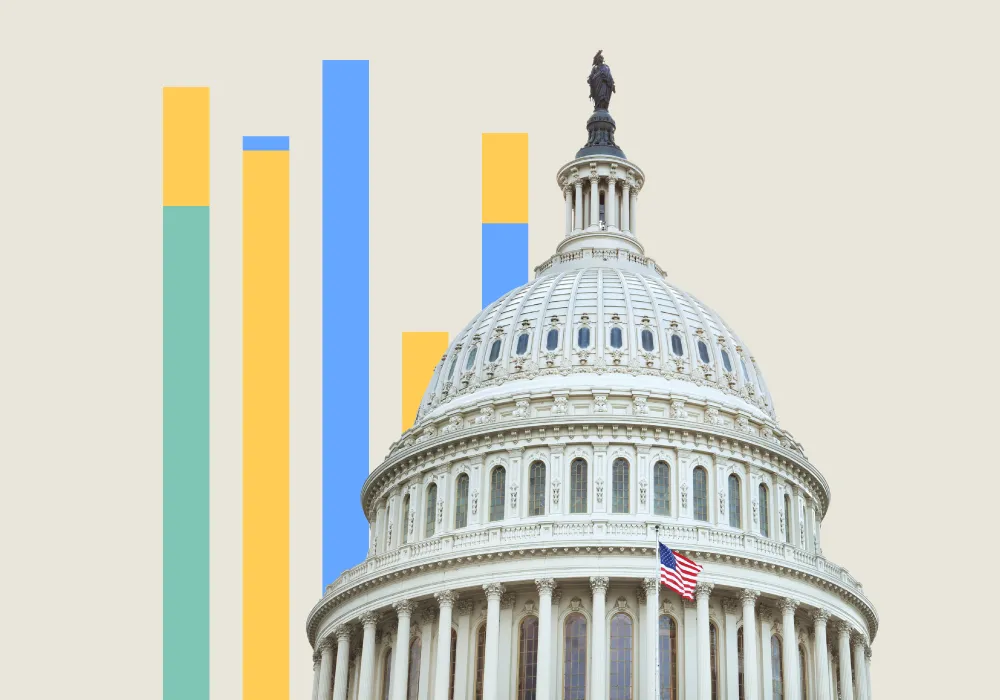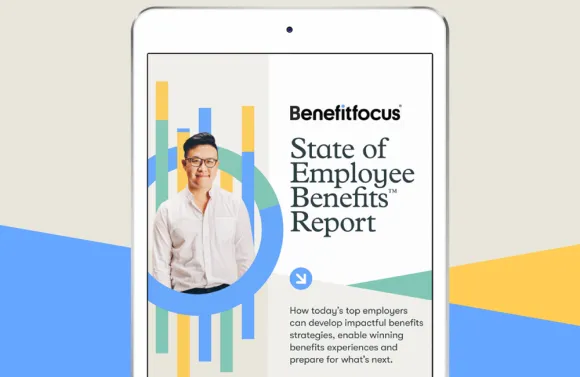
Each year, Benefitfocus takes a deep dive into its customer enrollment transactions and its continued monitoring of trends in the employee benefits ecosystem to provide you with insights on the current state of the benefits industry and where the industry is heading. This year’s report also includes primary research from Voya Financial Consumer Insights & Research, as well as carefully curated third-party industry research, which helped round out Benefitfocus’ overall analysis. Check out the Report here.
All of the great data and insights got me thinking about the following questions:
- First, how do “government policies” impact and shape the health benefit strategies and trends that we see in the Benefitfocus 2024 State of Employee Benefits Report?
- Second, does the evolution of how employees respond to their benefit offerings – coupled with the different actions employers must take to attract and retain talented workers – correspondingly impact and shape these government policies?
To answer these questions, let’s take a walk down memory lane, shall we?
In 1974, Congress passed the Employee Retirement Income Security Act (ERISA), the seminal law governing employer-sponsored retirement and health plans. Over the past 50 years (yes, ERISA turns 50 this year!), Congress and the Federal Departments continually modified ERISA’s requirements or imposed additional requirements on retirement and health plans through new laws and regulations. Many of these new and/or modified requirements were technical fixes, while others rose to the level of significant, industry-altering changes with the same policy goals in mind:
- Encouraging employers to offer retirement and health plans to their employees; AND
- Making it easier for employees to access quality and affordable health coverage and save for the future in both the areas of retirement and health.
One way in which Congress sought to achieve these policy goals is through Tax Policy. At its most basic level, Congress uses Tax Policy to incentivize employers and employees “to do something.”
With regard to health benefits, Congress afforded various tax incentives to employers to encourage them to voluntarily offer health coverage to their employees (through, for example, a corporate income tax deduction and excluding employer contributions from the calculation of the employer’s FICA tax liability).
To encourage employees to “take-up” health coverage, employer and employee contributions for health benefits are similarly not taxable to the employee for both income and FICA tax purposes.
As health care costs continued to rise over the past 5 decades – and as more of the cost of offering health benefits was shifted onto employees – Congress and the Federal Departments also developed rules to allow employees to pay for eligible health care expenses on a tax-free basis (through, for example, a Cafeteria Plan and Flexible Spending Account [FSA]). The Federal Departments also created the Health Reimbursement Arrangement (HRA) where employers can voluntarily fund an account to reimburse employees’ substantiated health expenses on a tax-free basis.
Congress then created a savings account with a triple-tax benefit where employees can (1) set aside wages on a pre-tax basis, (2) enjoy any investment returns* on a tax-free basis, and (3) ultimately pay for specified health care expenses on a tax-free basis (through a Health Savings Account [HSA]). Congress sought to encourage enrollment in a High Deductible Health Plan (HDHP) by tying an employee’s ability to contribute to an HSA to the employee’s enrollment in an HDHP.
Policymaking has also centered on reducing health care costs by “bending the cost-curve downward.” Efforts to lower health care costs have included drug pricing reforms, increased transparency of medical prices and claims data, and promoting value-based care strategies, among others.
And while there is a cost component to enacting policies like requiring a specified level of health coverage, ensuring protections for pre-existing conditions, and prohibiting discrimination and the unlawful use of personal health information, Congress has nonetheless sought to add these requirements to the law.
The bottom-line is this: Motivated by the social policy goal of ensuring that employees can access and pay for quality and affordable health coverage, Congress and the Federal Departments have created a web of rules and requirements that govern, encourage, and protect employer-sponsored health benefits. Such policymaking has in turn created an entire ecosystem to promote and support the delivery of health benefits to employees.
As our global economy and diverse workforce continues to evolve – especially as Boomers continue to retire and Gen Z establishes their foothold in the workplace – Congress and the Federal Departments will continue to respond with new policymaking. For example, irrespective of who wins the White House and controls Congress after the upcoming November elections, we could very well see Congress and the next Administration use Tax Policy to reduce government spending while trying to change employee behavior.
Benefitfocus will continue to be on top of any future legislative and regulatory changes that will no doubt influence the current state of the employee benefits ecosystem. And, Benefitfocus will be at the forefront of crunching the data and providing insights on current trends in the benefits industry which will inform policymakers on what type of policies they should enact.
Download the 2024 State of Employee Benefits Report!
*All investing involves risks of fluctuating prices and the uncertainties of return and yield inherent in investing. All security transactions involve substantial risk of loss.
The information provided does not, and is not intended to, constitute legal advice; instead, all information and content herein is provided for general informational purposes only and may not constitute the most up-to-date legal or other information. This summary is provided by a consultant to Benefitfocus.com, Inc., and any opinions expressed within do not necessarily reflect those of Benefitfocus.com, Inc. or its affiliates and are not intended to provide specific advice or recommendations for any plan or individual.
Benefitfocus is a Voya Financial® company.
CN3629668 _0626



